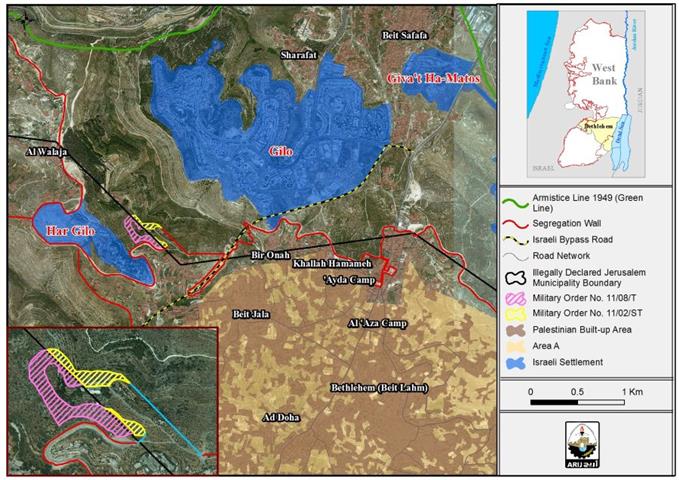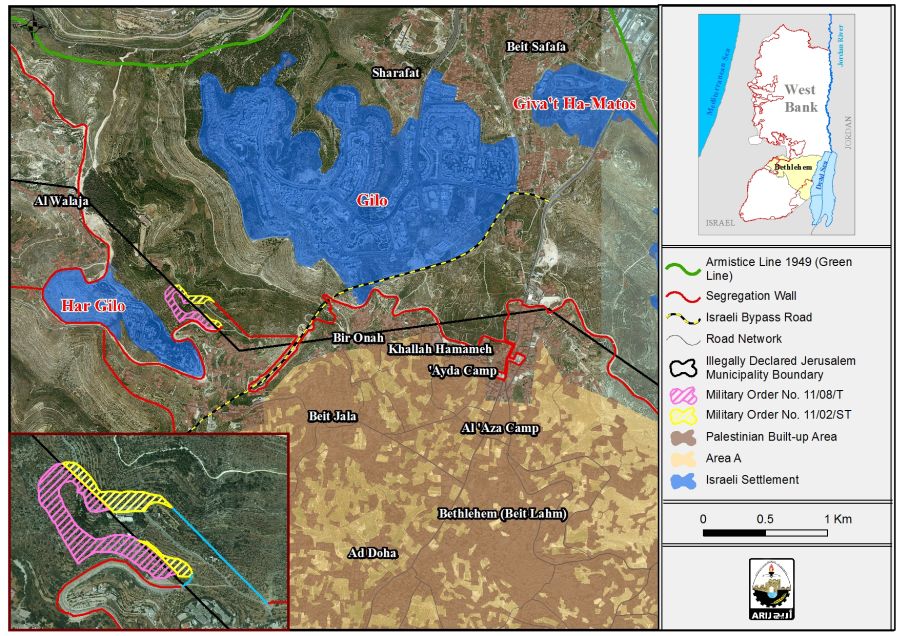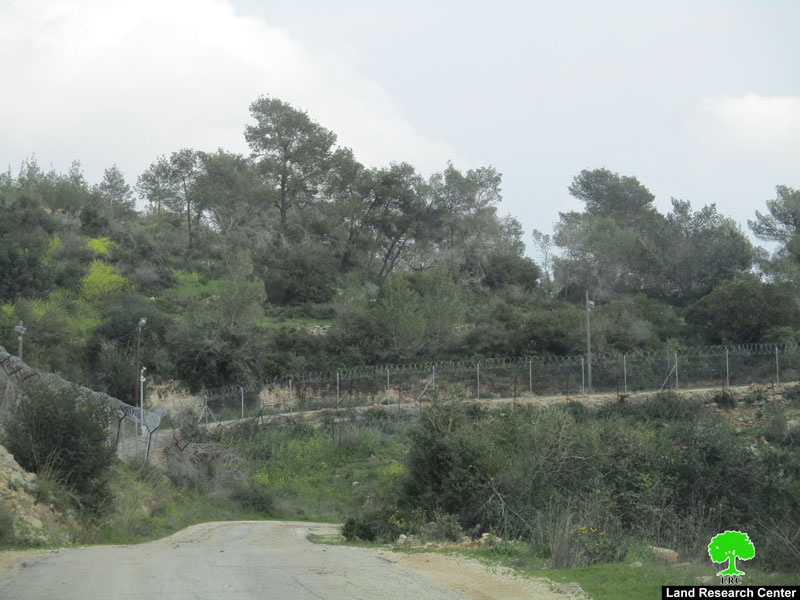The Israeli Supreme Court in Jerusalem is hearing the case of building the Segregation Wall on lands of Cremisan Valley in Beit Jala today, Monday, the 4th of August 2014.
In light of the current political situation and the Israeli aggression on the occupied Gaza Strip, and the image that Israel is trying to send to the international community, regarding what is happening in the Gaza Strip is "Palestinian terrorism," as said by Israel, and how it reflects on the situation (in general) in the occupied West Bank and Palestinians living in, the question remains, will the Palestinians succeed in the face of the Israeli Government and extract a ruling from the Israeli Supreme Court not to build the Segregation wall on lands of Cremisan Valley area????.
Since Israel started the construction of the Segregation Wall in the occupied West Bank on the 16th of June 2002, it stated that the wall will be built on the basis of securing the state of Israel and its citizens from the “Palestinian Terrorism”, as claimed. However, the wall is a long-termed plan that aimed at grabbing as much Palestinian land as possible along with natural resources and controlling the Palestinian territory for the sake of sustaining the future of Israeli settlements illegally built on the territory it occupied in 1967. See Map 1
Map 1: The Israeli Segregation Wall plan in the Cremisan Valley – Beit Jala
And the Cremisan Valley case in Beit Jala city is one of the unresolved issues between Palestinian land owners and the Israeli government, where Israel claims that building a wall on land of Cremisan valley will protect Israeli settlements, (Gilo and Har Gilo) located in close proximity of the Palestinian town of Beit Jala and some other Palestinian communities nearby (Al Walaja, Husan and Battir), of any possible danger from the Palestinians. However, what Israel is implementing has nothing to do with what is claiming, where the wall plan in the area showed that Israel intends to build the wall for certain objectives: –
- The Cremisan area is located in the area that was illegally and unilaterally annexed by Israel in 1967 to expand the municipal boundaries of Jerusalem after its occupation of the Palestinian territory (West Bank including East Jerusalem and the Gaza Strip).
- Despite the fact that Cremisan Valley land is the only natural expansion to the city of Beit Jala and its residents, the Israeli settlements’ master plans of the nearby Israeli settlements, (Gilo and Har Gilo and others nearby), show that Israel intends to annex the area because it constitutes a geographical link between Israeli settlements in East Jerusalem and those in the Gush Etzion settlement bloc and inside Israel.
- In June 2004, the Israeli Occupation Authorities announced the construction of a new Israeli settlement northwest Bethlehem city. The plan envisions the building of “Giv'at Yael” settlement on 2,976 dunums of Bethlehem Governorate lands, belonging to Al Walaja, Battir and Beit Jala communities, north-west of Bethlehem Governorate. 1,126 dunums are located within Al Walaja village lands, 1,279 dunums within Battir village lands and 571 dunums within Beit Jala city lands (Cremisan Valley Land). This settlement will physically complete the ring of settlements separating Jerusalem and encircling Bethlehem. It will start at Har Homa, north-east of Bethlehem city, extending to Gilo and Giv’at Hamatos”north of Bethlehem city, to Har Gilo west of the city, linking with the planned Giv’at Yael and continuing towards Gush Etzion bloc in the southwest. The new initiative intends to create a chain of Israeli settlements between Jerusalem and Gush Etzion settlement bloc (southwest of the Bethlehem Governorate) as part of the ‘Jerusalem Envelope’ plan (ARIJ, Settlement Unit, 2012). The aim of this plan are two-fold; i) to encompass as much land as possible and ii) to increase the number of Jews within Jerusalem’s illegal boundaries in order to alter the demographic status of the city and influence the outcome of future negotiations.
- If Israel carries out its plan on land of Cremisan Valley, the wall will separate the most important and vital areas of Beit Jala from its residents; this is in addition to the isolation of the land (agricultural and open) from their owners to become under the full Israeli control; thus, controlling the entry and exit of landowners to isolated areas, and over the years, deprive them access to it permanently.
- The construction of the Israeli Segregation Wall on Cremisan Valley land, and most especially, on the land owned by the Salesian Sisters Convent in the area, will put the educational process for 400 students ( from the cities of Bethlehem, Beit Jala and Beit Sahour and Al Walajeh village ) who attend the school in danger because the wall will surrounded the Convent and the school from all directions except for the eastern side which leads to the center of life in the towns of Beit Jala and Bethlehem and hinder their expansion in the future.
- The land owned by the Salesian Sisters Convent in the area which is threatened by confiscation and isolation is considered a source of income to tens of Palestinian families in the area; If implemented, the wall will deprive these families their main source of living.
To conclude,
Under the guise of security, Israel is trying to redefine the municipal boundaries of Jerusalem once again in clear and explicit defiance of the international law and humanitarian conventions through the construction of the wall.
Israel is also manipulating the demographic and geographic facts in the city of Jerusalem for the benefit of the Israelis, and to achieve this, the construction of the wall will annex the largest possible number of Israeli settlements to the new borders Israel is unilaterally delineating through the construction of the wall; at the same time, it will exclude many Palestinian communities and set them outside the city borders, which at the end, will ensure a Jewish majority in the Holy City of Jerusalem.
The construction of the Israeli Segregation wall was never based on "maintaining the safety and security of the citizens of Israel," but the first and foremost goal was the confiscation and annexation of the largest possible area of Palestinian land to Israel and the imposition of bitter facts on the ground before reaching any final peace agreement with the Palestinians.
Prepared by:
The Applied Research Institute – Jerusalem














